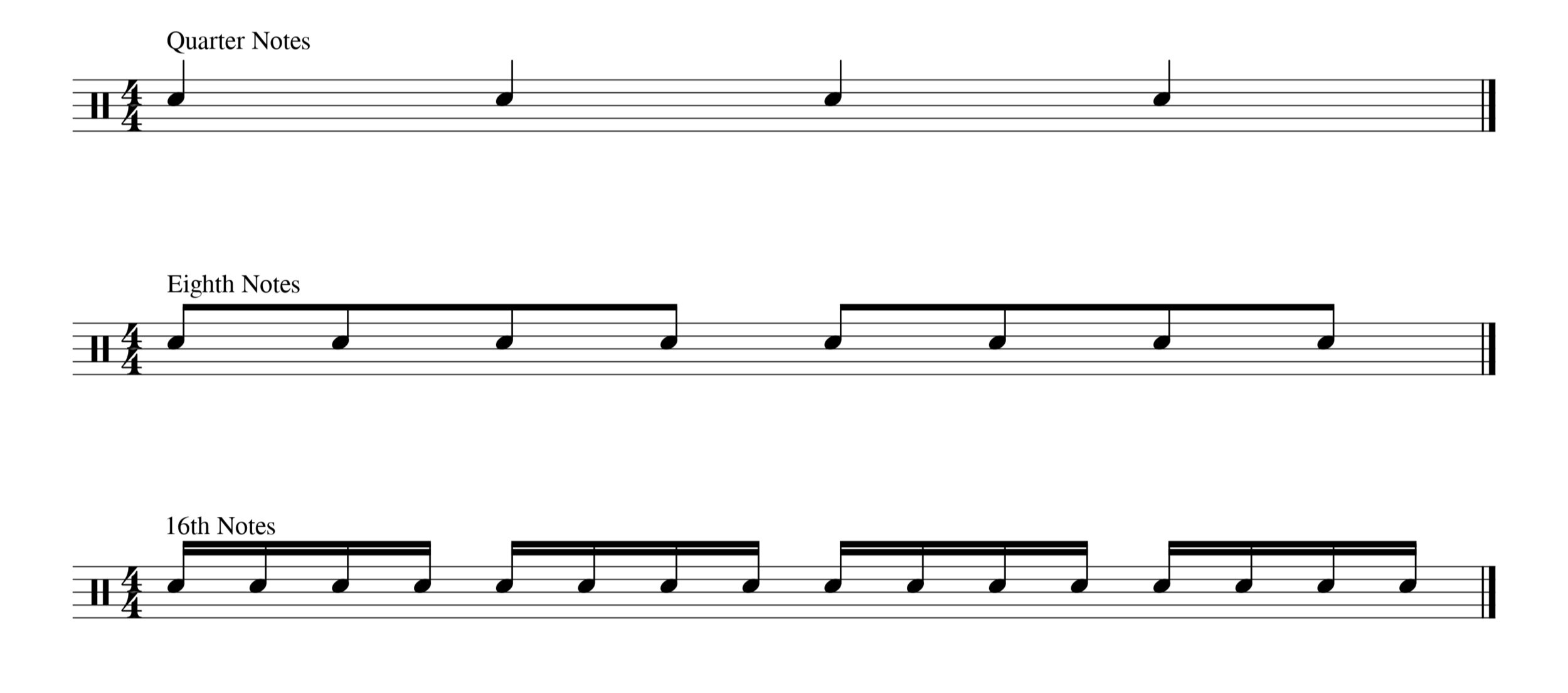Lesson 7: Sixteenth Notes - Part 2
Overview: This video covers Sixteenth Notes combined with Eighth Notes, and updates the Table Of Time.
Assignment: Joel Rothman's Teaching Rhythm, pages 29 - 34 : Get The Book (paid link)
You can also get a metronome here: Get the Metronome (paid link)
Welcome back to the video series on rhythm. If you watched the previous video on 16th notes you already know that I decided to cut it into two separate videos.
In Part 1, I discussed the 16th note subdivisions and how to count them. You learned to use four 16th notes to take up the duration of a single quarter note.
Now, in Part 2, you'll be combining 8th notes and 16th notes within the same beat.
As I've mentioned in each video so far, the main rule to follow is that your measure has to add up to its full duration, per the time signature. You can use any mix of note values we've learned so far to get there.
You can mix whole notes, half notes, quarters, eighths and 16ths all within the same measure as long as you follow the time signature. For example, you can't use a whole note in a measure of 2/4 because it takes up too many beats, but you can use a whole note and more in a time signature of 6/4.
This rule allows you to mix and match subdivisions too, as long as you have enough of them to make the measure whole.
If you remember back to the Table of Time, you can split your beat into two 8th notes per quarter note and two 16th notes per 8th note (Fig. 1). You played examples in Teaching Rhythm where four 16ths took up a whole beat.
Fig. 1 Quarter Notes, Eighth Notes and Sixteenth Notes Source: www.ChristianJohnsonDrums.com
One way you can change up the rhythm a bit is to use a mix of 8ths and 16ths within the same beat. I've updated the table of time to show you what these rhythms look like.
The first version shows one 8th note and two 16ths (Fig. 2). If you subdivide all of the 16ths and count out loud, you'll play on the number, the "+", and the "a". You don't play on the "e".
I’ve included four beats of 16ths notes so you can see how this rhythm lines up in the beat. Click here to hear me play examples from Teaching Rhythm in my video at 2:08.
Fig. 2 16th Notes on the Upbeat Source: www.ChristianJohnsonDrums.com
In the second variation, you play on the number, the "e" and the "+" (Fig. 3). You don't play the "a". Again, the four beats of sixteenth notes in the first measure are so you can see how this new rhythm lines up in the beat. Hear the example in my video at 3:54.
Fig. 3 16th Notes on the Downbeat Source: www.ChristianJohnsonDrums.com
Don’t forget that you also have 8th note rests in your repertoire. Check out how you can use an 8th note rest instead of an 8th note to show that you only play the first last two or first two 16th notes in a beat (Fig. 4). Click here to hear examples of the first rhythm with rests in my video at 3:31. And click here to hear examples of the second rhythm at 4:25.
Fig. 4 Sixteenth Notes and Eighth Note Rests Source: www.ChristianJohnsonDrums.com
This lesson is fairly straightforward since it's the 2nd half of the previous lesson. However, this is the start of learning more complex-sounding rhythms and I think they represent what people think of when they hear the word "rhythm". Really, it's the subdivisions of the beat that people tend to consider rhythmic.
In the next lesson, I'll discuss 16th Note rests, which, like all the rests we've seen so far, is a beat of silence. This time it takes up, you guessed it, one 16th note's duration of time.
You can get all of the videos in the Rhythm and Reading Series right to your inbox weekly by subscribing to my newsletter here or be notified when I post new videos by subscribing to my YouTube channel.



